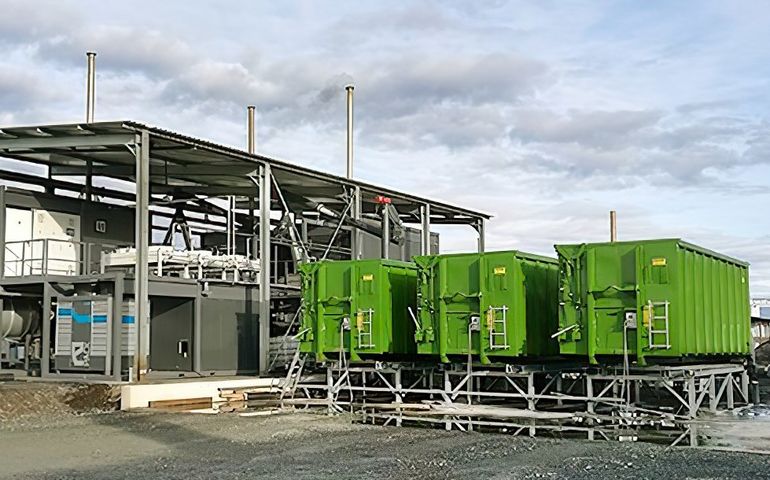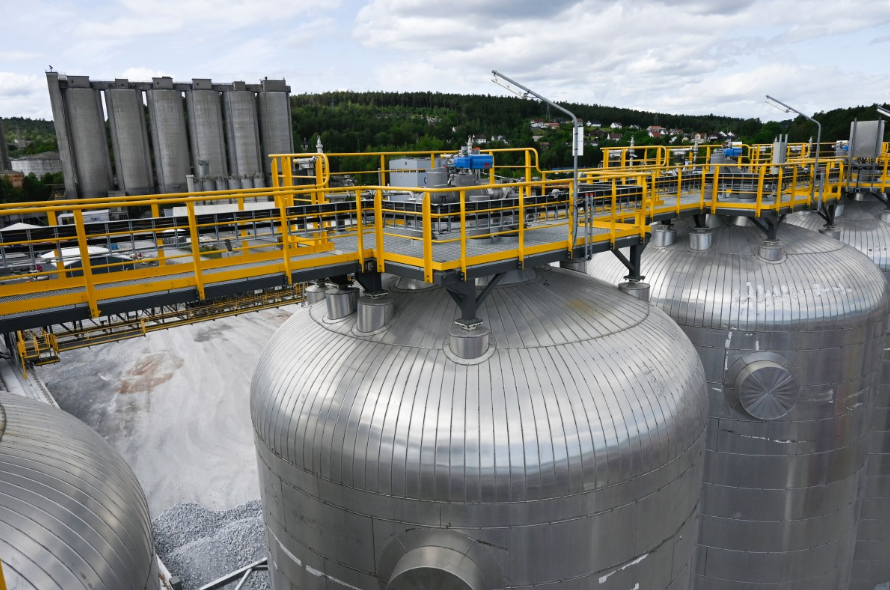
McKinsey's latest analysis delivers a stark reality check: carbon capture technologies need to grow by a staggering 120 times by 2050 to meet global net-zero commitments. But while consultants crunch numbers, a growing roster of companies is already putting carbon removal credits on the market, proving the industry has serious momentum beyond the boardroom projections.
The gap between ambition and action has never been clearer. McKinsey projects that carbon capture, utilization, and storage (CCUS) must reach at least 4.2 gigatons annually, with some scenarios demanding up to 10 gigatons per year. That's roughly equivalent to removing the emissions of 800 coal power plants, or nearly three times the entire airline industry's carbon footprint.
The challenge is even starker when you consider the current pipeline. Based on existing CCUS projects, only 110 million tonnes per annum are expected by 2030. Yet to meet the net-zero commitments of 64 governments, approximately 715 million tonnes are needed by 2030 and 4.2 billion tonnes by 2050.
>> RELATED: CCUS Revolution: How 120x Growth Could Transform Net Zero

The Scale-Up Reality Check
The consultancy warns that CCUS has "struggled to find its footing" over three decades, pointing to inadequate policy frameworks and insufficient financial incentives. McKinsey's analysis reveals the stark reality: of 263 CCUS projects undertaken from 1995 to 2018, 78% of larger projects (above 0.3 million tonnes per year) have been canceled or put on hold.
McKinsey's Scale Challenge by Numbers:
- 120x growth needed by 2050 under aggressive scenarios
- 60x minimum scaling even under conservative estimates
- 4.2-10 gigatons of annual carbon capture required
- 45% of industrial emissions could be addressed through CCUS
- $130 billion annually investment needed from now until 2050
- 25,000+ global industrial emitters could be decarbonized through CCUS
Yet this assessment misses a crucial development: the carbon removal market has already started delivering tangible results, with nearly 15 million tonnes contracted by May 2025 according to CDR.fyi data. While traditional industrial CCUS struggles with scale and complexity, biochar and other distributed approaches are proving that carbon capture can work commercially today.
Leading the Charge: Top 10 Carbon Removal Suppliers
While McKinsey focuses on future scaling challenges, companies across the globe are actively removing carbon and delivering verified credits to buyers. Here's who's actually moving the needle right now:
1. Exomad Green (Bolivia)
The undisputed leader with 1.76 million tonnes sold and 150,820 tonnes delivered. The biochar pioneer secured the largest-ever biochar agreement with Microsoft for 1.24 million tonnes. Their flagship facility in Bolivia's Guarayos Region will become the world's largest biochar production site when operational in mid-2026.
2. Aperam BioEnergia (Brazil)
This Minas Gerais-based operation has sold 121,183 tonnes with 89,298 tonnes delivered. As an operating unit of global stainless steel company Aperam, they produce biochar from FSC-certified eucalyptus plantations, attracting clients like Nasdaq exchange and Swedish bank SEB.
3. Varaha (India)
Operating across India, Nepal, Bangladesh, and Kenya, Varaha has sold 195,364 tonnes with 83,361 tonnes delivered. The company made headlines with a major Google agreement for 100,000 tonnes of biochar by 2030.
4-10. The Rising Players
| Company | Location | Tonnes Sold | Specialty |
|---|---|---|---|
| Wakefield Biochar | Georgia, USA | 57,841 | Wood waste processing |
| Carboneers | Netherlands | 123,210 | Global South partnerships |
| Pacific Biochar | California, USA | 42,159 | Fire hazard biomass |
| Freres Biochar | Oregon, USA | 26,498 | Cogeneration facility |
| CarbonCure | Canada | 36,979 | concreteConcrete mineralization |
| Planboo | Global South | 34,298 | Tropical biochar projects |
| Running Tide | Maine, USA | 28,302 | Ocean carbon removal |
Four Revenue Streams Driving the Market
McKinsey identifies four critical revenue streams that will determine CCUS viability beyond government subsidies. Interestingly, the companies leading carbon removal today are already tapping into several of these streams:
McKinsey's Revenue Model:
- Subsidies and tax credits like the US 45Q tax credit ($85-$180 per tonne)
- Green premium pricing for low-carbon products (consumers willing to pay 100% more for zero-carbon plastics)
- CO2 as feedstock for products like cement, polymers, and synthetic fuels
- Voluntary carbon markets with negative emissions credits priced above $500 per tonne
The current carbon removal leaders are already proving this model works. Companies like CarbonCure inject captured CO2 into concrete, creating both permanent carbon storage and stronger building materials. Biochar producers sell premium soil amendments while generating carbon removal credits. This dual-revenue approach is exactly what McKinsey says the industry needs to achieve commercial viability.
Market Momentum vs. Historical Failures
The numbers tell a compelling story of an industry already in motion. CDR deliveries reached 318,600 tonnes in 2024, with contracted volumes hitting nearly 8 million tonnes. By May 2025, contracts had nearly doubled to 15 million tonnes, suggesting the market is accelerating faster than many projections anticipated.
Biochar Leading the Charge:
- 94% of delivered carbon removal credits in 2023 came from biochar
- 62% of high-quality biochar capacity for 2025 already allocated
- Cost range of $80-200 per tonne makes biochar the most affordable CDR option
- Multiple co-benefits including soil improvement and agricultural productivity
This market activity contrasts sharply with McKinsey's warning about traditional CCUS deployment happening "far too slowly." The consultancy notes that China, Europe, India, and the United States account for more than 60% of industrial point-source emissions, requiring a highly distributed deployment approach. While large-scale industrial capture faces policy and investment hurdles, the carbon removal sector has found ways to deliver results through smaller-scale, distributed approaches that can scale up over time.
Bridging the Scale Gap
The tension between McKinsey's 120x scaling requirement and current market progress highlights a crucial question: can today's carbon removal leaders bridge the gap to industrial-scale deployment? Early indicators suggest yes, but with important caveats.
Companies like CarbonCure represent the industrial integration approach, injecting captured CO2 directly into concrete production. By 2030, they aim to reach 500 million metric tons of annual carbon reduction and removal. That scale would single-handedly address 5-12% of McKinsey's projected requirements.

>> In Other News: KLEEN HY-DRO-GEN INC., Announces Launch of World’s first Zero-Emissions Hydrogen Furnace
Investment and Policy Alignment
McKinsey's call for better policy frameworks aligns with growing industry momentum. The consultancy specifically points to inadequate policy landscapes in most markets, emphasizing the need for more direct and indirect incentives plus targeted regulations. This policy focus could accelerate the transition from today's million-tonne market to tomorrow's gigaton requirements.
Financial markets are also responding to the carbon removal sector's growth. The data from CDR.fyi shows contracted volumes nearly doubled from 8 million tonnes in 2024 to 15 million tonnes by May 2025, indicating strong buyer confidence in the technology's long-term viability.

"Achieving the gigaton-scale carbon removal needed by 2050 won’t be driven by technology alone. It requires robust policy frameworks that provide clear incentives and regulatory certainty, alongside coordinated investment and buyer demand. Early movers are proving commercial viability today, but accelerating progress depends on synchronized efforts across policy, markets, and innovation."
Note: The following quote is a paraphrased summaries from authoritative sources, not direct verbatim excerpts. For full context and exact wording, please refer to the linked reports.
The Path Forward
McKinsey's 120x scaling challenge isn't just about technology, it's about proving commercial viability at unprecedented scale. The top 10 carbon removal suppliers have demonstrated that buyers exist, delivery is possible, and diverse approaches can work. Now the question is whether policy support, investment flows, and technological innovation can accelerate this progress fast enough to meet 2050 targets.
The early movers in carbon removal aren't waiting for perfect conditions. They're building facilities, signing contracts, and delivering verified tonnes while the broader industry debates scaling strategies. In a sector where McKinsey warns of slow progress, these companies represent proof that carbon capture isn't just critical for the future, it's happening right now.
Subscribe to the newsletter
Daily decarbonization data and news delivered to your inbox
Follow the money flow of climate, technology, and energy investments to uncover new opportunities and jobs.
Latest issues
-
SAF Output Doubled, So Why Is IATA Sounding Alarms?
Happy New Year from Decarbonfuse! As we wrap up 2025, we want to thank you for being part of the growing Decarbonfuse community. Your engagement and feedback have helped make this platform a trust...
-
$213 Per Tonne: Inside the Latest Multi-Pathway CDR Deal
Inside This Issue 💸 $213 Per Tonne: Inside the Latest Multi-Pathway CDR Deal 🏛️ Clean Energy Technologies Affiliate Vermont Renewable Gas Advances Regulatory Review 💧 Fusion Fuel’s BrightHy Soluti...
-
The Three-Continent Move That Redefines SAF
Wishing everyone a restful holiday season.🎄🎅🎁 Inside this Issue ✈️ Cathay Goes Global With SAF in Three-Continent Fuel Deal 🧪 Proton Ventures Partners With Barents Blue For Realization Of The Bar...
Company Announcements
-
HyOrc Completes Factory Acceptance Test of 500kW ORC Turbine for International Customer
HOUSTON, Dec. 31, 2025 (GLOBE NEWSWIRE) -- HyOrc Corporation (OTCID: HYOR), a clean-energy technology company, today announced the successful completion of the Factory Acceptance Test (FAT) for its...
-
Nova Sustainable Fuels Receives Approval to Produce Sustainable Aviation Fuel in Guysborough County
Nova Sustainable Fuels has received environmental assessment approval for the first phase of a project that will see the company develop a renewable energy park in Goldboro, Guysborough County, whe...
-
Darling Ingredients Announces Sale of Approximately $50 Million in Production Tax Credits
IRVING, Texas -- Darling Ingredients Inc. (NYSE: DAR) today announced the sale of approximately $50 million of production tax credits to a corporate buyer. These credits were generated under the In...
-
Aemetis Receives Funds From the Sale of $17 Million of Federal Clean Energy Tax Credits
CUPERTINO, Calif., Dec. 30, 2025 (GLOBE NEWSWIRE) -- Aemetis, Inc. (NASDAQ: AMTX), a renewable natural gas and renewable liquid fuels company focused on lower cost and reduced emissions products, t...